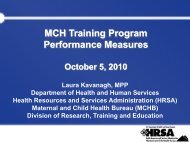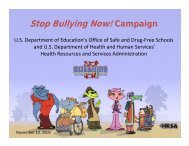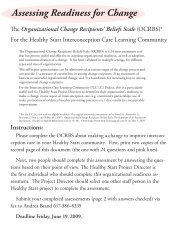Pediatric Case Studies - HRSA
Pediatric Case Studies - HRSA
Pediatric Case Studies - HRSA
You also want an ePaper? Increase the reach of your titles
YUMPU automatically turns print PDFs into web optimized ePapers that Google loves.
PEDIATRIC CASE STUDIES: EMERGENCY DEPARTMENT TRIAGE<br />
child to cry or struggle and the danger of the balloon occluding her airway would<br />
be even greater. Even if you do not have a bed for this child you would get her to<br />
the treatment area immediately.<br />
10. Level 5: No resources. The child just needs a physical exam and a prescription<br />
refilled which are not resources.<br />
11. Level 2. This child is a High Risk patient; he has a significant history of<br />
anaphylaxis and even though he appears to be stable at this time, biphasic<br />
reactions account for 50% of deaths in anaphylaxis.<br />
12. Level 4: One resource-laboratory (UA/C&S); exam and prescription. (The exam<br />
and Rx are not resources. If the first dose of antibiotics is given in the ED, that is<br />
not a resource either unless it is given parenterally).<br />
13. Level 3: This patient is going to require multiple resources. He will need the<br />
wound repaired, for which he will likely need sedation and he may also need an<br />
x-ray to evaluate for a retained foreign body.<br />
14. Level 3. This child meets the latest ESI 4 guidelines of a Level 3 pediatric<br />
patient. He has a fever, incomplete immunizations and no obvious source of<br />
infection.<br />
15. Level 5: The child needs an exam and may need a prescription for a topical<br />
antifungal (prescriptions do not count as a resource).<br />
16. Level 3: More than one resource. The child will need an x ray of his foot and<br />
removal of the foreign body. He will also need a tetanus shot but that is not<br />
counted as a resource.<br />
17. Level 1. This child has significant mechanism of injury with clear neurological<br />
complications. Given the unresponsiveness and hypoxia on a non rebreather the<br />
child is in need of immediate airway management.<br />
18. Level 2. This infant, really a neonate, may simply be spitting up formula, and<br />
have inexperienced parents, but because she can’t tell you what is wrong and<br />
neither can the parents due to their inability to communicate with you properly in<br />
triage, she is a High Risk patient. In triage you cannot rule out more serious<br />
causes of the vomiting (such as a malrotation or pyloric stenosis) without better<br />
history and assessment. You would not want this infant waiting in your waiting<br />
area.<br />
Funded by Grant H34MCO4371 From the Health Resources and Services Administration/<br />
Maternal and Child Health Bureau’s Emergency Medical Services for Children Program.<br />
© 2010 University of North Carolina at Chapel Hill<br />
6


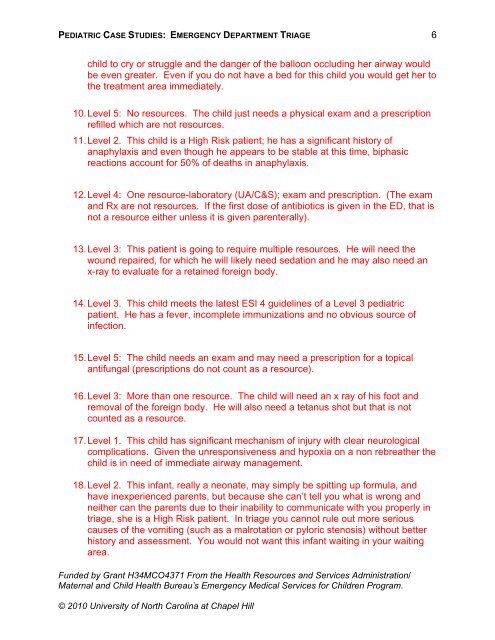

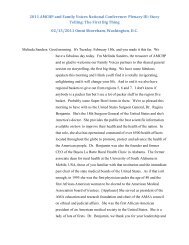



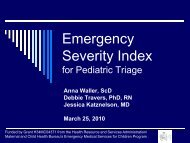
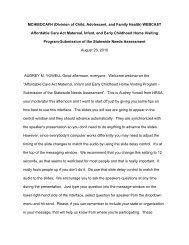
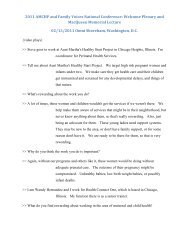
![Hormone Disruptors and Women's Health: Reasons for Concern [PDF]](https://img.yumpu.com/19410002/1/190x245/hormone-disruptors-and-womens-health-reasons-for-concern-pdf.jpg?quality=85)

